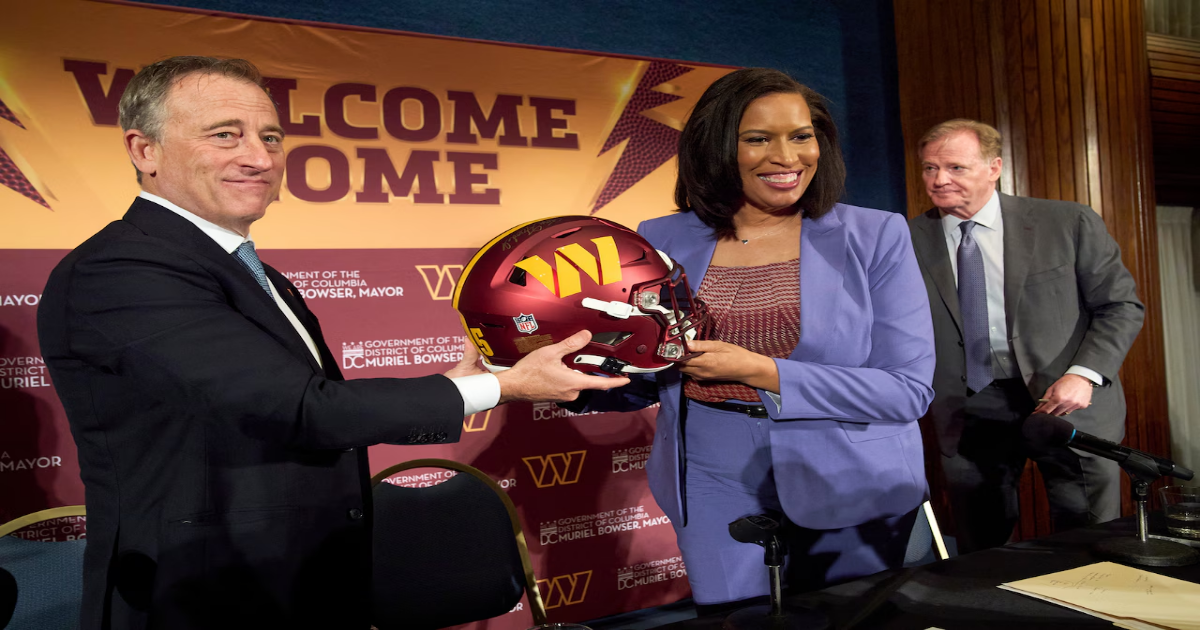CLEVELAND, Ohio — As the Cleveland Browns push for a $2.4 billion stadium and surrounding development in Brook Park, another NFL team has struck its own deal — offering a real-time comparison that Clevelanders might find eye-opening.
The Washington Commanders and the city announced Monday an agreement to build an enclosed football stadium costing $3.2 billion on the site of the former RFK Stadium last used by the team in 1996.
The plan features many similarities to the Browns’ proposal: Both stadiums would be enclosed, sold as an opportunity to attract more events to cold-weather cities. Capacity for each would be about 65,000. The stadiums and adjacent developments would cover roughly 180 acres each. And both would involve contributions from the team and taxpayers.
The clearest noticeable difference is that the Commanders plan to move back into the city from Landover, Maryland, whereas the Browns want to move from downtown Cleveland to suburban Brook Park.
The financial differences are more complicated.
While taxpayers are being asked to contribute a little over $1 billion in both cities, the Commanders are putting up $2.7 billion — more than twice as much money toward their stadium as the Browns have pledged for their Brook Park project.
Here’s how the two proposals stack up:
Commanders’ commitment: $2.7 billion toward the $3.2 billion stadium.
Washington’s public commitment: $1.058 billion. This includes $500 million to prep the stadium site for construction from a business tax that had been used to pay for a baseball stadium. The mayor’s plan also involves $356 million for parking garages and $202 million for roads and other infrastructure improvements. City Council approval will be required.
Surrounding Washington development: The city and the team plan to build housing, retail, restaurants and parks on separately designated portions of the 180-acre site. The cost for these developments is not included in the deal announced Monday.
Browns commitment: $1.2 billion toward a $2.4 billion Brook Park stadium, plus the cost for any overruns.
Public share for Brook Park: The team’s plan calls for $600 million in state borrowing and $600 million in county borrowing for the stadium. The loans would be paid back with a combination of site generated taxes, such as income, admissions and parking taxes, and to a lesser degree, from an increased countywide hotel bed tax and a new countywide car rental fee. It has not been determined who would pay for road and pedestrian path improvements, initially estimated at $79 million. State, city and county approvals are still needed for the plan.
Surrounding Brook Park development: The Browns plan to add hotels, restaurants and housing, costing about $800 million. No tax dollars are being sought for this.
Opening dates: The Washington stadium is to open in time for the 2030 season. The Browns plan calls for a 2029 opening.
Research compiled by Washington placed the public investment for the stadium at 24% (counting the parking garages but not the infrastructure improvements), in comparison to stadium projects in the works with a 60% public share in Tennessee, 50% in Jacksonville and 49% in Buffalo.
A beaming Washington Mayor Muriel Bowser announced the deal during a news conference streamed online, calling the team’s commitment of $2.7 billion the largest private investment in a project in the history of the city.
As for how much such a facility would improve Washington’s chances of hosting a Super Bowl, NFL Commissioner Roger Goodell said: “I didn’t come here to announce that, but I would say dramatically.”
Bowser billed the stadium as a key part of launching an important riverfront development that goes beyond football.
The overall plan envisions 12,500 homes, 97 bars or restaurants, six hotels and 7.4 million square feet of office space.
The Browns’ plan in Brook Park calls for two hotels, 500,000 square feet of office space 1,100 residential units and 275,000 square feet of retail.
The Plain Dealer and cleveland.com have reached out to the Browns for comment.
Rich Exner covers regional development and transportation for cleveland.com. Read previous Browns stadium coverage at this link.
